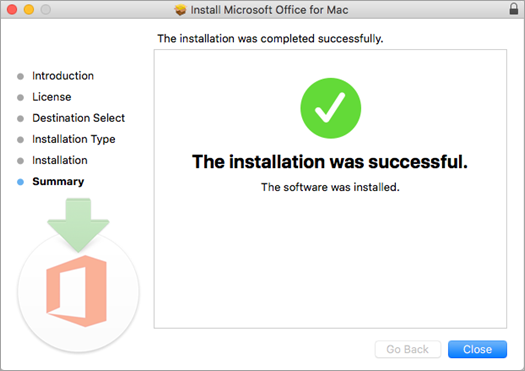
- THE OFFICE FOR MAC INSTALLATION DID NOT INSTALL
- THE OFFICE FOR MAC INSTALLATION DID NOT UPGRADE
- THE OFFICE FOR MAC INSTALLATION DID NOT SOFTWARE
- THE OFFICE FOR MAC INSTALLATION DID NOT CODE
- THE OFFICE FOR MAC INSTALLATION DID NOT FREE

THE OFFICE FOR MAC INSTALLATION DID NOT SOFTWARE
Unless you need absolute file compatibility with Office for Windows, non-Microsoft Office software is very good, and some of it is free: Alternatives To Microsoft Office Option 2: Install/Use Non-Microsoft Office Software
THE OFFICE FOR MAC INSTALLATION DID NOT FREE
THE OFFICE FOR MAC INSTALLATION DID NOT INSTALL

THE OFFICE FOR MAC INSTALLATION DID NOT UPGRADE
Although initial reports suggest Office 2011 works just fine on macOS 10.13, a future Apple macOS update or upgrade could render Office 2011 unusable and there would be no update to fix that. Microsoft has officially stated that they have not tested and will not test/support Office 2011 on macOS 10.13 High Sierra or later.

Remove Office 2011 and install/use non-Microsoft Office software that is kept up-to-date.Continue to use Office 2011 and try to reduce the security risk.So, the bottom line is that by continuing to use Office 2011, you have an ever-increasing security risk to you, your computer and your data.
THE OFFICE FOR MAC INSTALLATION DID NOT CODE
And Microsoft Office itself is an attack vector for the bad guys – they can create malicious files that can crash your Office software and then run code on your computer which has the potential to take it over or install very bad things on it. You may shrug your shoulders and (falsely) think “Hey, Macs don’t get viruses and are therefore secure, so what?” This is not true – Macs are not secure there still isn’t a Mac “virus”, but there are many other forms of attack. Office 2011 will become insecure as Microsoft no longer provides important security updates for the suite. In fact, it’ll probably continue working for a while into the future. Microsoft Office 2011 isn’t going to stop working overnight. So, if you’re still running Office 2011 you probably should be asking yourself the question, “What should I do?”. That means no updates or bug fixes, and if anything goes wrong or stops working in Word, Excel, Powerpoint, or Outlook, you’re on your own. If you want to remove some features but keep Outlook, expand the directory and remove just those features.Microsoft is no longer offering any support for Office for Mac 2011. To uninstall Outlook, click on the button beside the name and choose Not Available, then Continue. Click the little down arrow on the box to choose different installation options for each feature.Click the + (plus signs) to expand the directories, if Outlook is not visible.An X on the icon indicates not available, a 1 means it is set to install the first time you use it. The Installation options tree displays a white box if all features are installed and gray if some features are either "not available" or are installed on first use. You'll want to choose Add or Remove Features. Clicking Change will open the Office installation dialog with option to add or remove features or repair.If using Outlook 2010 and older, follow these steps to uninstall Outlook. You can delete the shortcuts to Outlook and set a different email client as default. Reminder: Outlook 2013 and newer cannot be uninstalled from the subscription version of Office. (If you have a lot of M's, type N and scroll up.) Tip: Click on Name at the top of the list of programs to sort applications by name then click on an application and type M to jump down to the programs that start with M. Locate the entry for your Microsoft Office application and choose Change. Tip: type Add Remove Programs in the search field in the Control Panel to find it (works in all versions of Windows).

Go to Control Panel, Programs and Features (Vista and Windows 7/8/10) or Add/Remove Programs in using Windows XP.


 0 kommentar(er)
0 kommentar(er)
